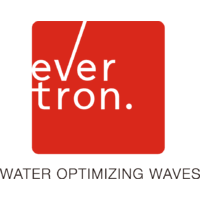Research /Innovation / Protocol /
Research /Innovation / Protocol /
Research
At the heart of our work lies a bold vision: to unlock human potential by bridging ancient wisdom and cutting-edge science. Our research is not confined to theory; it is a living, evolving practice rooted in testing, developing, and refining protocols that elevate human performance at every level—physical, mental, emotional, energetic, and quantum.
We approach optimization as both an art and a science. Drawing from centuries-old healing traditions, modern integrative medicine, neuroscience, and bioenergetics, we design personalized strategies that honor each individual’s unique blueprint. Every method we develop is backed by data-driven research, advanced technology, and measurable outcomes, ensuring that transformation is not just felt but proven.
This page will grow into a living library of studies, data, and insights that document our journey. Here, you’ll find the evidence behind our approach: the testing, protocols, and discoveries that shape a new frontier of human performance and longevity.
-

Quantum Optimization
“In treated human cell groups, ATP production rose 20–29% compared with controls in a blinded design.” leelaq.com
“A double-blind cell study reported 46–100% faster recovery indices under Leela Quantum Bloc conditions.” ifqtf.org
“During 5G exposure, Quantum Upgrade® was associated with significant HRV improvements and a shift toward calmer EEG activity.” Quantum Upgradeleelaq.com
“A small randomized, sham-controlled human pilot found protective effects on blood morphology with a Quantum Bloc during Wi-Fi exposure.” ResearchGate
-

Mind Optimization
Single BrainTap session → higher HRV (parasympathetic “recovery” tone)
A clinical trial (n=100 adults) found that one 20-min BrainTap AVE session significantly increased HRV and parasympathetic activity and reduced stress index and heart rate. HRV was measured pre/post with a standardized system. BrainTap Research Center+1Why HRV matters for athletes
HRV is a well-established marker of autonomic balance, recovery status, overreaching, and readiness in sport. Higher (or rebounding) HRV is generally associated with better recovery and readiness; suppressed HRV can flag accumulated fatigue. (Peer-reviewed reviews.) PubMedPMCSleep & relaxation benefits (indirect recovery) with BrainTap/AVE
BrainTap’s research group reports pilot work showing improvements in sleep quality and mood with AVE (university students; insomnia day-workers). An internal BioStrap × BrainTap study also explored sleep/stress outcomes in healthy adults. While pilots/observational, these support using sessions for post-training down-regulation and sleep prep. BrainTap Research Center+1BrainTapAthlete injury context: concussion recovery
In high-school athletes, BrainTap AVE combined with NormaTec compression significantly reduced lingering post-concussion symptoms vs. control in a real-world clinic protocol; results were later presented as a scientific poster (BMJ Open Sport & Exercise Medicine, 2025). This speaks to neuro-recovery in an athletic population (though it’s combined-modality and not about day-to-day training load). BrainTap Research CenterBMJ Open SemanticsCognitive/mental readiness (supporting evidence)
BrainTap reports a 2016 internal case study where gamma activity increased ~20% after a single session (EEG), consistent with heightened attentional engagement; treat as preliminary. Separately, peer-reviewed research shows guided imagery and binaural/isochronic beats can enhance attention and mental performance—mechanisms BrainTap leverages (not BrainTap-specific RCTs in athletes yet). BrainTapFrontiers -

Bioenergetic Optimization
Regarding Blood Lactate Levels During Cycling Exercise Using a W.O.W Multi-Stage Incremental Load Test (Unpublished Data)
Measurement Method
A bicycle ergometer (Fuujin Raijin) was used with a gradual load increase protocol. Each stage lasted 3 minutes, starting at 30W and increasing to 45W. Warm-up was done, then load was increased every 3 minutes. Cadence was maintained at 60 rpm, and cycling was continued until cadence dropped below 50 rpm.
Measurement Items
Blood lactate concentration
Heart rate
RPE (Rating of Perceived Exertion)
Subjects
5 male and female students (4th year) from Nippon Sport Science University
Conclusion
Using W.O.W for 30 minutes prior to exercise is effective for smooth energy production in muscle cells.
Compared to not using W.O.W, all five subjects who used it for 30 minutes had lower blood lactate concentration, lower heart rate, and lower RPE (subjective exercise intensity), allowing them to exercise more comfortably. -

Bioenergetic Optimization
Performance:
Young competitive skiers (RCT, 6 weeks): WBV + strength work improved explosive strength and some plantar-flexor strength more than equivalent training without vibration. Vibragenix
Elite & amateur athletes (acute study): Superimposed vibratory stimulation increased max and mean powerduring explosive biceps work (immediate effect; no lasting residual effect). Vibragenix
Young adults (RCT, 4–8 months): WBV increased jump height and affected balance/performance endpoints. (Useful for general performance optimization.) Vibragenix+1
Sprint athletes (5-week add-on): No performance improvement with that specific WBV protocol—good to show mixed evidence. Vibragenix
Neuromuscular function (4 weeks): WBV improved electromechanical delay and rate of force development—mechanisms relevant to performance. Vibragenix
Recovery:
DOMS reduction in elite hockey players (post-exercise WBV): Less soreness after eccentric work. BioMed Central
Meta-analysis on vibration for DOMS: Vibration training reduced pain and markers like LDH/CK vs controls. Lippincott Journals
Lactate clearance: Studies suggest WBV (often ~20 Hz) can enhance blood lactate removal after intense exercise; recent work in combat athletes also tracked lactate and strength with vibrational therapy. aassjournal.comMDPI

